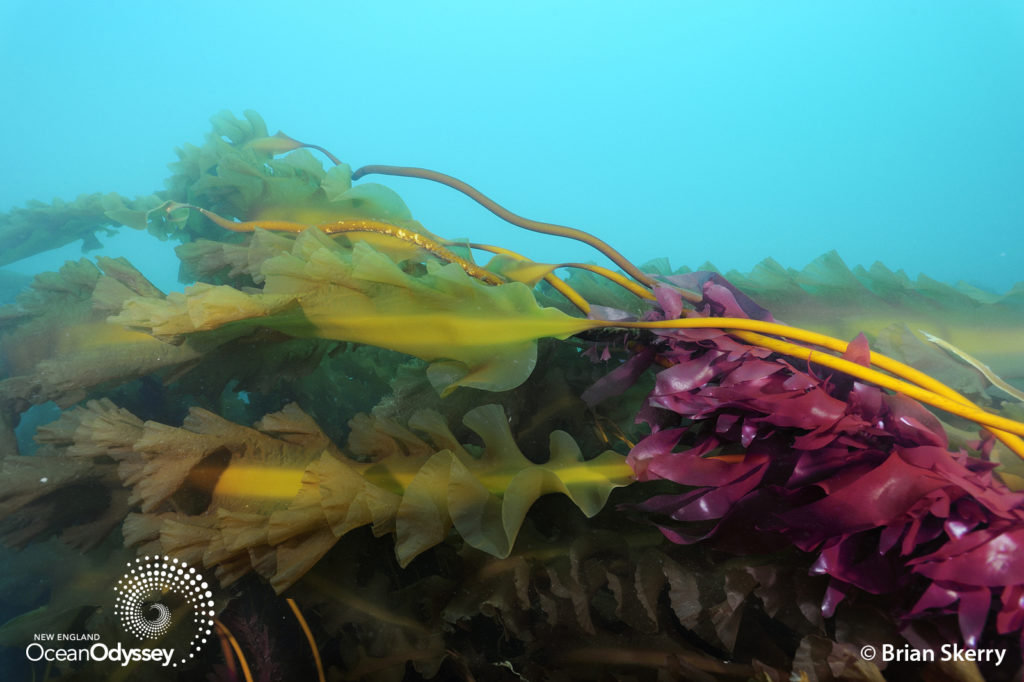
Climate Impacts in Motion
In September, leaders from around the world gathered in Washington, D.C., for the third annual Our Ocean Conference, hosted by Secretary of State John Kerry. Together, they committed to 136 new initiatives aimed at conserving and protecting fragile ocean areas worldwide.
In between commitments from the countries of Sri Lanka and Panama, CLF Vice President and Director of Ocean Conservation Dr. Priscilla Brooks took to the microphone to address heads of state and environment ministers from around the world. On this global stage, Brooks announced CLF’s commitment to address climate impacts in the fast-warming Gulf of Maine and along New England’s coast.
How severely those impacts will hit New England waters is still unknown. But what is known is that water temperatures in the Gulf of Maine are rising faster than virtually any other ocean area in the world. By the end of this century, the Gulf is expected to be five degrees warmer than it is today.
From lobsters moving northward in search of cooler temperatures, to dramatic changes in the abundance of plankton that could weaken entire food webs, a warmer Gulf of Maine could wreak havoc on New England’s fisheries, recreational opportunities, and even tourism, all of which contribute significantly to healthy coastal economies.
What’s more, sea level rise and increased storm intensity could inflict significant damage to coastal businesses, beaches, and residences, with lasting consequences to the economy and environment.
The solutions to these problems will be complex – which is why CLF is taking a multi-pronged approach: fighting to break New England’s addiction to dirty fossil fuels and slash climate-warming emissions, and working to ensure that the region’s coastal communities and ocean waters – including its diversity of wildlife and habitats – remain strong and healthy in the face of climate impacts already in motion. The safest path forward, according to marine scientists, will require the permanent protection of our most fragile and ecologically important ocean areas.
CLF celebrated in September when President Obama announced the creation of the Northeast Canyons and Seamounts Marine National Monument. This first monument in the Atlantic will cover nearly 5,000 square miles and protect centuries-old coral formations and endangered marine mammals. But one protected area in New England’s ocean is not enough – especially given the dire predictions facing the Gulf of Maine.
The clear choice for another protected area is that around Cashes Ledge, an underwater mountain range and biodiversity hotspot located in the Gulf of Maine about 80 miles from Cape Ann. With breathtaking beauty and abundant marine life, the area serves as a haven for the iconic Atlantic cod and endangered North Atlantic right whale. CLF has successfully worked to protect this fragile area from being re-opened to the most destructive fishing activities, but those protections are temporary. Permanent protection will ensure Cashes Ledge remains both a much-needed refuge for ocean wildlife and a critical underwater laboratory for scientists working to understand the ecological consequences of warming temperatures and increasingly acidic waters.
CLF is also working to safeguard New England’s fishing communities, which form such a vital part of the region’s economy and culture, from the new and complex challenges climate change has brought. That means restoring and protecting New England’s legendary fisheries by making sure that commercial fishermen adhere to the rules around catch limits and closed areas – and that those rules are based on science and are enforceable. It also means considering the whole ecosystem when designing fishery management plans, including protecting forage fish at the base of the food chain, and ensuring more deliberate attention is paid to the small boat fishing fleet’s dependence on coastal waters.
In addition, CLF is combating the effects of ocean acidification, which could devastate the region’s shellfish industry, by cutting carbon emissions regionwide and stemming the flow of nutrients from nearby rivers into the ocean. Those nutrients not only worsen ocean acidification, but also create dead zones void of marine life.
Fishing is just one of the core uses of New England’s ocean, however. New uses such as wind, wave, and tidal energy, gas pipelines, and offshore aquaculture are vying for space in the ocean alongside traditional uses like fishing, surfing, and boating. The first-in-the-nation Northeast Regional Ocean Plan is intended to help New Englanders capitalize on these opportunities, but not at the expense of the health of the ocean, the livelihood of area fishermen, or the places where locals and tourists alike go to play.
CLF had an active role in the development of the regional ocean plan, which will be finalized later this year, and the organization will be equally active in its implementation as the plan rolls out in 2017. Managing current ocean uses – and anticipating future ones – is a complex task, and the Northeast Regional Ocean Plan is a game-changing new tool for federal and state agencies, regulators, and other stakeholders to make smart decisions that effectively balance human use of our ocean with ensuring its long-term health.
As coastal communities brace for the impacts of climate change, CLF will be at the forefront of efforts to help reduce the severity of those impacts when possible, and to develop strategies to manage the impacts that can’t be avoided. A healthy ocean will support sustainable and thriving coastal economies – and CLF is working to make sure New England has both for generations to come.



